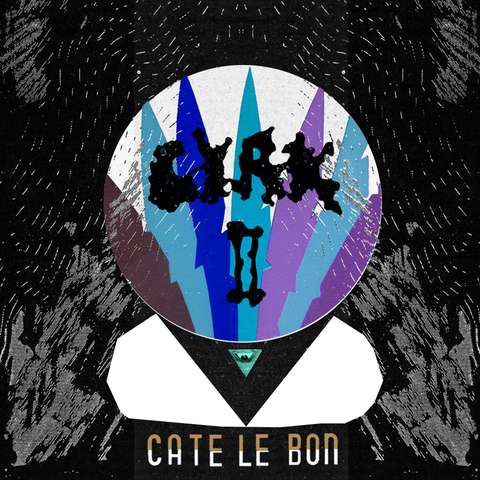Much has been made of the relationship between Cate Le Bon’s previous album, CYRK, and its kindred EP CYRK II–besides the obvious sequential aspect. It’s not uncommon for an artist to have songs left over from the studio sessions that provided the body of a previously released album. In fact, it’s quite common, as any number of demo and b-side collections can attest.
But it’s quite another for these spare songs to feel as open-ended and dynamic as those that made the cut for the actual release. We have had a few examples of this kind of creative spiritual successor in recent years. Okkervil River released The Stand Ins in 2008 which culled together extra tracks from the time they spent in the studio recording 2007’s The Stage Names; and just this year, Marissa Nadler released The Sister, a full-length accompaniment to her underrated 2011 self-titled record. On CYRK II, both Le Bon’s sense of composure and level of maturity have increased greatly, even in the short time since CYRK was released earlier this year. If there is a comparison to be made, it would most likely be analogous to an older sibling describing the period of adjustment in which they finally decided to grow up and act accordingly and relating this to a younger, more free-spirited sibling.
This internalizing of experience is really the heart of CYRK II and where it derives much of its emotional weight. At just five tracks, this album seems like it might have not the ability to successfully develop a fully realized musical identity. Some would say that’s the curse or stumbling block that comes when releasing an EP. But Le Bon has accomplished just that on CYRK II. Even her influences here seem to be better executed and more thoughtfully constructed than on its predecessor. That being said, these tracks do take time to develop and expand. If you’re not interested in putting forth the effort to fully explore the nuances of these songs, you may find yourself tuning out after the initial listen. It’s not because the songs are dull or monochromatic, just the opposite, but they require the listener to hear them in the context of CYRK and Le Bon’s continuing progression as a songwriter. This EP is invariably linked to its companion LP, and it’s best seen in that context. Not that that it can’t stand on its own, but the evolution of theme and execution feel so organic flowing from that record to this EP that it seems a shame not to allow them that connectivity.
Le Bon opens with “What Is Worse,” a song which feels as heavily indebted to early ’90s girl rock artists like PJ Harvey and Helium as it does to seminal female artists like Nico and Marianne Faithful. Her voice in its lowest register clearly evokes the breathy, smoky tenor of Nico, but when she reaches higher, it seems as though she’s channeling the ready-made crescendo vocals of The Delgado’s former singer, Emma Pollock. The drums shuffle along and the guitar churns behind her vocals, occasionally stopping to hit a dissonant note before moving on. There’s nothing necessarily sonically inventive being played around with here but the precise construction and Le Bon’s memorable voice provide more than enough grounding to anchor the song. The crisp guitar tones and knocking percussion which open “The Eiggy Sea” give way to some somewhat monochromatic vocals that are given life in the chorus, as her voice rises and clearly takes on the form of an aural memory. The titular sea may or may not be an actual place for Le Bon but her evocation of it makes it real for us.
Across this EP, she makes it a point to draw the listener close. If indeed this album constitutes some form of emotional development for her, it’s a progression, she feels, that is best taken in the company of others. The prevailing attitude here is one of unreserved openness. It’s true that she has grown as a songwriter and musician but she also sees herself as having grown as a person and to some degree that’s the much more interesting aspect of CYRK II. Songs like the determinedly casual “That Moon” and raucous highlight “Seaside, Lowtide,” with its searing guitar lines, lend credence to this statement, as both songs feel like separate expressions of Le Bon herself. If the instruments are just extensions of her own personality, then the music that is spread across these tracks represents a significant transition for her as an artist. If CYRK saw her finally letting us hear what she was capable of, then CYRK II shows us that there is a depth and dimension to her music that even that earlier release had not hinted at. Any follow-up will be hard pressed to match this EP’s run of condensed emotion, but I’d be willing to bet that it will just as complex and just as in need of companionship. I’m willing to walk with her again for a while.

